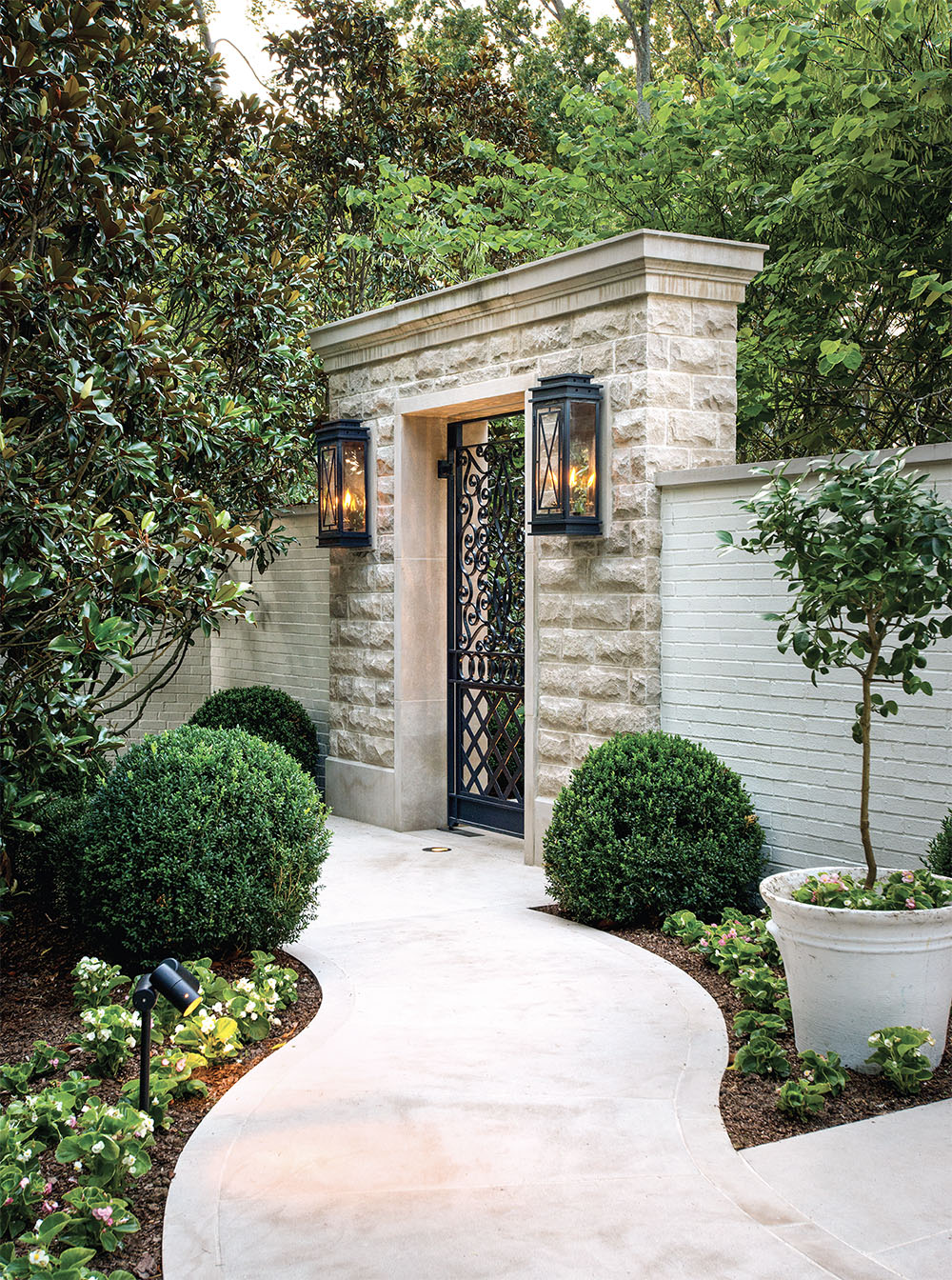Text: Karen Carroll
Photos courtesy of Duke Design Group
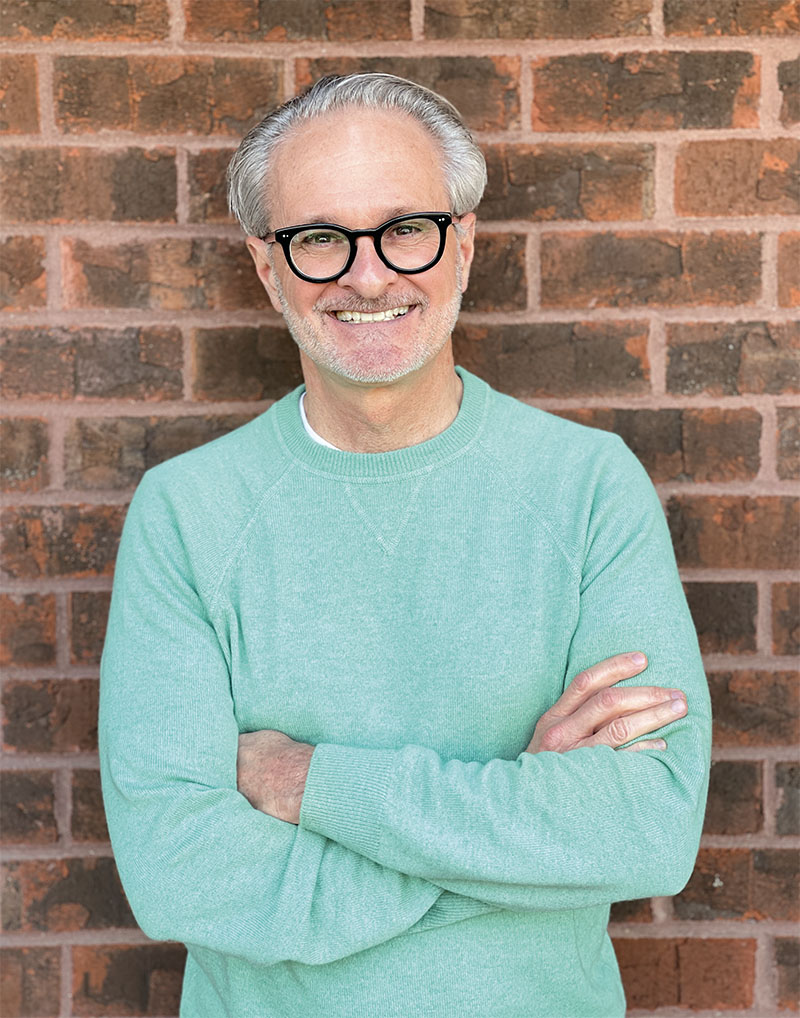 Southern Home (SH): Tell us about your early memories of being in the garden.
Southern Home (SH): Tell us about your early memories of being in the garden.
Gavin Duke (GD): I grew up in rural Arkansas, and in the summers, my parents would create a vegetable garden, which I helped tend. It wasn’t big, although it seemed so to me as a child. Each grandparent also had a plot at their houses. We were growing a lot of our own food, canning, and storing things in season. My maternal grandfather was a carpenter, and I also developed a curiosity about building blocks and nailing things together at an early age. Combining all that together eventually brought me to landscape architecture.
SH: When was your “aha,” when you truly knew landscape architecture would become a career?
GD: In college. I was in architecture school, and at that time, everything was about post-modernism. I became disenchanted because a lot of the buildings we were studying weren’t the greatest, in my opinion. One night, I slipped into the landscape architecture studio next door and saw that they were designing parks and gardens—and I realized it looked much more like what I wanted to do.
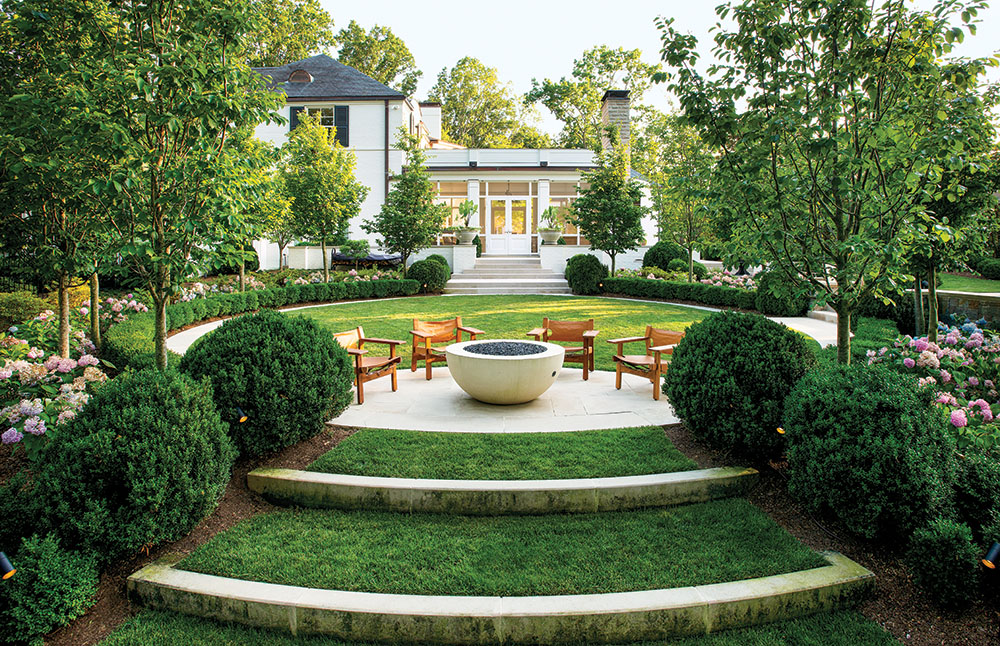 SH: Ok, clearly post-modernism was not your cup of tea. Do you consider yourself a classicist, or how would you describe your style?
SH: Ok, clearly post-modernism was not your cup of tea. Do you consider yourself a classicist, or how would you describe your style?
GD: I do a lot of classical work and have been involved with the Institute of Classical Architecture & Art for many years. But I’m a chameleon in some regards. I blend in with the house’s architecture and what the site presents. Sometimes I’m involved in more contemporary projects, but the same classic design principles of proportion, sight lines, and axial relationships still apply—it’s just a different aesthetic. I think a reason why I’ve been in this profession for 35 years is because I haven’t put myself in a corner of being only a classicist or a modernist. I like to explore and learn. Garden design is a bit like figuring out a puzzle and putting the pieces together.
SH: Has your design philosophy and the puzzle pieces you’re fitting together shifted over the course of your career?
GD: It has changed, because our environment has changed. When I started out, we weren’t really thinking about bees or native plants or creating meadows. Sustainable landscapes have become more a part of our conversation. It’s no longer just about “decorating the garden,” which I might have been guilty of early on, where there would be some boxwoods here, some hydrangeas there. I put a lot of thought into aspects like creating a rain garden to help dissipate storm water or finding a place where we can create a bird or butterfly habitat. There’s a duality—we want something beautiful and functional while still being conscious of how we’re impacting the landscape for future generations.
Also, through the years, plant materials have changed. Landscape design can be like fashion in that way. In the early ’80s, Bradford pears were the tree of choice, and then they fell apart. Boxwoods are timeless, but now we’re dealing with boxwood blight, so we have to think on our feet to achieve the structure they bring with something that has a similar look without the inherent issues.
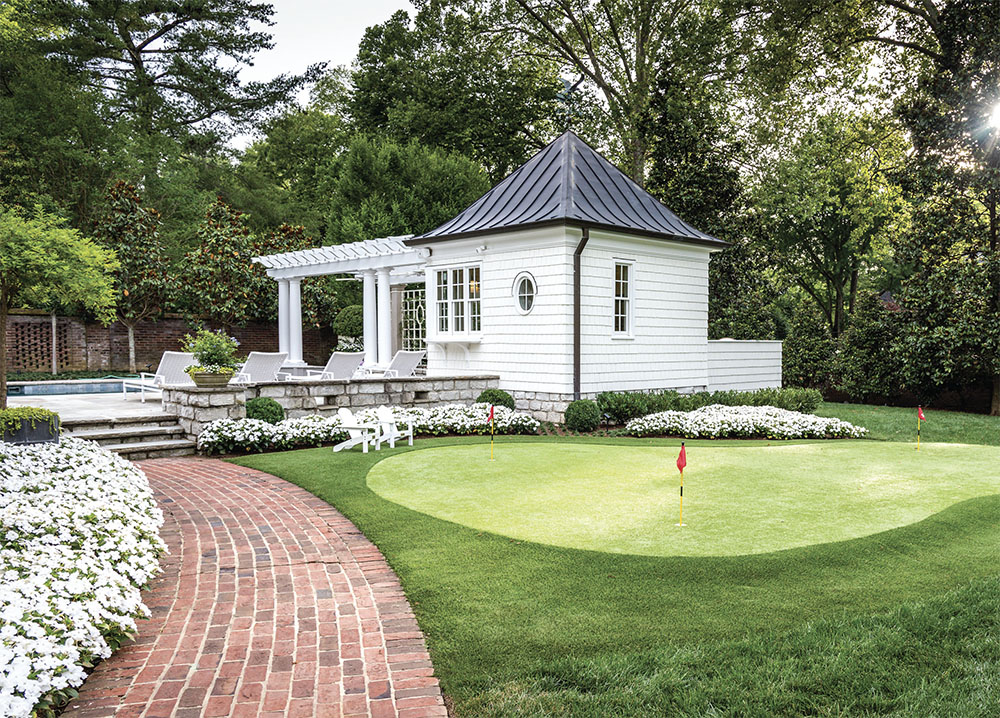 SH: A visitor’s initial impression of a house forms during the approach. How do you set a welcoming tone with the landscape, from the moment one pulls in the driveway and parks the car?
SH: A visitor’s initial impression of a house forms during the approach. How do you set a welcoming tone with the landscape, from the moment one pulls in the driveway and parks the car?
GD: I can think of a couple of different examples; one is more traditional and the other more of a discovery. In one residence you come through the front gates, but you don’t connect with the house immediately—you wind around on shoot-and-chip gravel road, and there’s a point where you’re presented the house and the front door, so you know that’s where you’re going. Once you get to the motor court, it brings you around to park, and it’s very relaxed. And then in another situation, it’s more of a modern approach; the road whips through ornamental grasses, and you see this structure with floating steps that take you up to a platform. You can’t see the door at first, but you sense the steps will lead you there. In most of our projects, we’re creating a buffer with a garden between the front facade and where you’re getting out of the car, so you experience the land before you go inside the house.
SH: What are some of the other ways you move people through the landscape?
GD: I like sequential garden rooms, where everything doesn’t reveal itself at once. One thing I tell clients, in the South, people usually don’t come through the front door to go to the backyard entertaining area. We’ll often create a friends’ entry gate, and then you might pass through an allée of Texas white redbuds with hydrangeas and a boxwood parterre, and on toward a cutting garden before coming to a moment where you turn and see the back terrace or pool. We’re leading them through exterior rooms just as you would move through the inside the house, where you’ll go from the foyer to the living room and beyond. We also pay close attention to how the interiors relate to the garden. What’s the view or focal point outside the family room, and if there are doors, where are they taking you? Or if you’re walking through a gallery hall with a bank of windows, is there a garden you’re experiencing on the way to the powder room or bedroom?
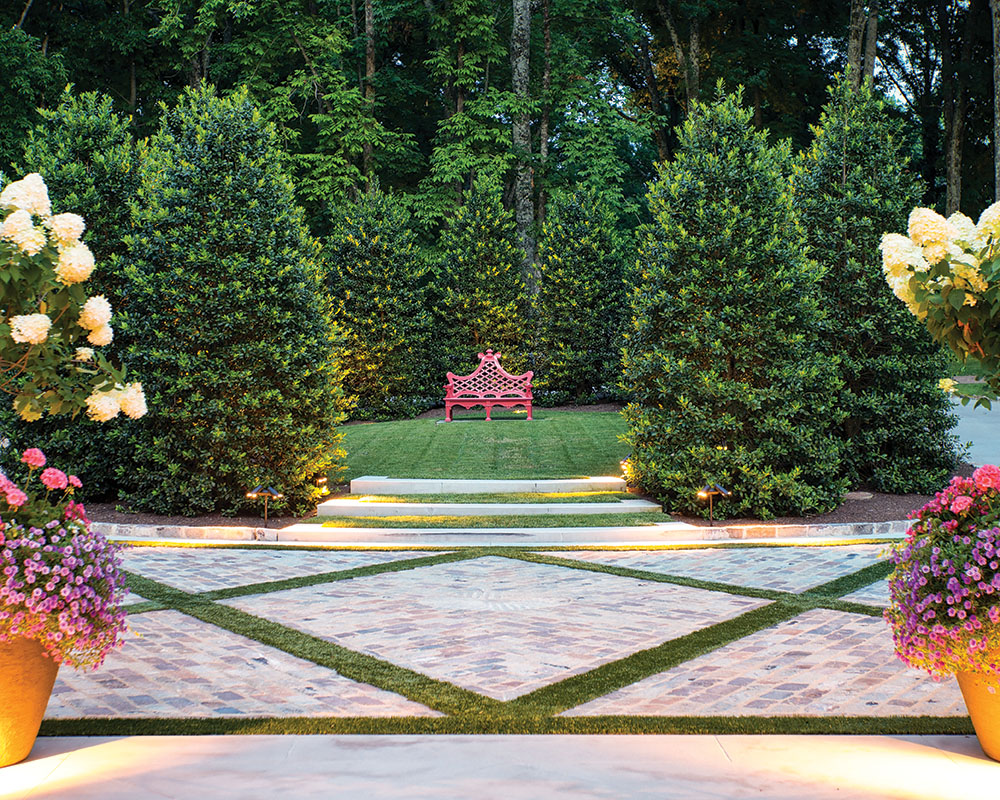 SH: While there’s nothing more serene than a garden with only variations of green and white, when and how does more intense color come into play? In one of your designs, we notice a splash of red in a fanciful Chippendale-style bench.
SH: While there’s nothing more serene than a garden with only variations of green and white, when and how does more intense color come into play? In one of your designs, we notice a splash of red in a fanciful Chippendale-style bench.
GD: Color is intensely personal, and the homeowner’s preferences of course drives our choices. Some will only want lighter shades of the spectrum, and others want a more vibrant mix. I often think about color the way my wife Lorie does when she’s putting together an interior—she’ll bring in a pop of something bright in a pillow on a sofa, rather than letting it take over the whole room. I’ll use that same principle outside, with an area where you can do a “boom, here it is,” such as with that bench, and everything else is recessive and different textures and shades of green.
SH: What flowers or blooming materials do you particularly like to work with?
GD: Our number one request continues to be hydrangeas. For the bees and the butterflies, the dwarf and blue-chip buddleias are great, and rosemary is another good pollinator with a lavender bloom. Lately, I’m into spireas that have a nice pink. And one flower that always surprises me is angelonia. It lasts from early summer all the way until late fall. It’s a carefree, easy display of annual color—I don’t ever have to deadhead it, and it just keeps blooming. It’s like a confetti of reds, purples, blues, and white in the garden.
SH: Is it important to add some aspect of levity into the garden?
GD: It’s really more about adding the element of discovery. I recall a garden where we put in a yew hedge and hornbeam allée and incorporated large ceramics we like to call dinosaur eggs made by Atelier Vierkant in Antwerp. The client’s grandchildren love to play all over them. In another project, we placed kinetic sculptures by George Rickey that move with the wind, and it’s mesmerizing. I like to create moments that make you pause and want to take it all in.
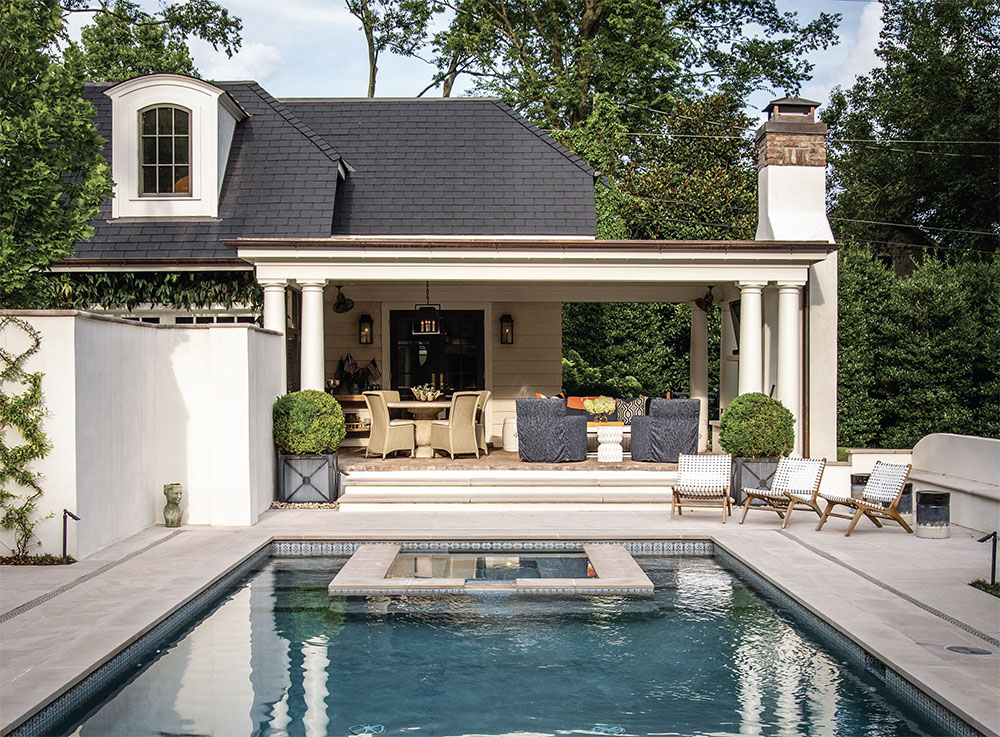 SH: Finally, what’s your favorite spot in your own garden?
SH: Finally, what’s your favorite spot in your own garden?
GD: A 10×10 structure that’s 16-feet tall. I paint, and it serves as a studio for my large-scale pieces. I also collect LPs and can play my vinyls without Lorie asking me to turn the music down! It’s next to my raised flower and vegetable beds, so it’s also where I store all my gardening implements. The reason it’s so tall is because I put in an upper bunk, where our daughter Poppy climbs up and has her own hangout space. We can each do our own things but still be together—I’ll treasure that for as long as I can.
10 Things to Know About Gavin Duke:
If not a landscape architect, I’d be: An oceanographer
Favorite flower or plant material: Sweetbay magnolia
I’m always on the hunt for: Handcrafted containers
Biggest lesson learned in the garden: Patience. I’m old enough to have reinvented gardens because I was initially swayed by the idea of instant gratification.
A public garden that inspires me: Dumbarton Oaks in Washington, D.C.
Essential design book in my library: Any by Belgian landscape architect Jacques Wirtz. I get a lot of inspiration from his European gardens.
My fantasy project: To create a major public park that would be influential for a lot of people.
When I need to recharge my creative batteries: I travel. I’ve been to Germany a few times in the last few years. I go for the gardens—and the beer.
Creative personality I’d most like to have a beer with: Piet Oudolf, the Dutch garden designer. It would be fun to sit down over a pint and talk ornamental grasses. He’s a masterful artist who thinks three-dimensionally and seasonally at the same time.
You’ll never see this my work: A waterslide on a pool. Of course, I’ve seen one recently made of polished stainless steel that was pretty spectacular. That would be the only possible option.
